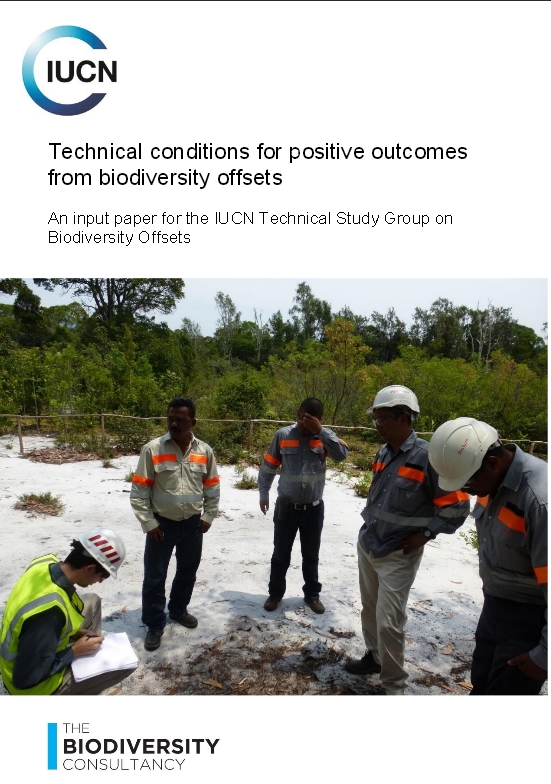 Recently, the IUCN Technical Study Group on Biodiversity Offsets has published some new resources (see also my previous posts Biodiversity Offsets Technical Study Paper and Biodiversity Offsets: Policy options for governments). Thanks to Patrick at the BBOP Secretariat for sharing this useful information
Recently, the IUCN Technical Study Group on Biodiversity Offsets has published some new resources (see also my previous posts Biodiversity Offsets Technical Study Paper and Biodiversity Offsets: Policy options for governments). Thanks to Patrick at the BBOP Secretariat for sharing this useful information
The present report on technical conditions for positive outcomes from biodiversity offsets was written by J. D. Pilgrim and J. M. M. Ekstrom of The Biodiversity Consultancy.
You can access the paper online (in the BBOP Library section) or find the pdf following: Technical conditions for positive outcomes from biodiversity offsets
Find below a short introduction, the key questions addressed by the authors as well as their general conclusions.
Introduction to the paper
We assess the conditions under which biodiversity offsets may: (i) provide the best outcomes for biodiversity; and (ii) achieve no net loss. Here, we consider ̳biodiversity offsets‘as measurable conservation outcomes resulting from actions designed to compensate for significant residual adverse biodiversity impacts arising from project development after other appropriate prevention and mitigation measures have been taken (BBOP, 2012a). The goal of biodiversity offsets is to achieve no net loss (or net gain) in biodiversity. ̳No net loss‘ is a goal in which residual impacts on biodiversity (after other mitigation measures have been taken) do not exceed the gains from offsets. Importantly, no net loss has no universal definition: it can have varying definitions dependent on what biodiversity and human preferences are accounted for, and how they are accounted for. For example, no net loss goals may vary in terms of spatial scales, biodiversity that is included, or whether they include only ̳like-for-like‘ exchanges (e.g. replacing a hectare of house mouse habitat with a hectare of house mouse habitat) or also̳ trading up (e.g. replacing a hectare of house mouse habitat with a hectare of panda habitat)
Key questions
- How much uncertainty is there?
- How should we deal with remaining uncertainty?
- How could offset outcomes be most improved?
- Under what conditions do biodiversity offset approaches provide positive outcomes for biodiversity, irrespective of the concept of no net loss?
- Under what conditions is it possible to achieve no net loss through the implementation of biodiversity offsets?
Conclusions
- There is high-level consensus on offsetting principles.
- Achievement of ‚no net loss‘ is likely to prove challenging.
- In many cases, biodiversity offset approaches could improve a status quo of limited or inadequate compensation for development, so there is a need for a balance between certainty and simplicity in offsetting.
- In some cases, offsetting may not be the best approach.
- Current offsetting outcomes would be most improved through integration of societal biodiversity conservation goals, more practical design, greater adherence to the mitigation hierarchy and better implementation.
- A few conditions are necessary for biodiversity offset approaches to provide positive outcomes for biodiversity, irrespective of the concept of no net loss.
- Numerous conditions are necessary to achieve no net loss through the implementation of biodiversity offsets. This includes:
- Facilitating conditions (i.e. existing policies and plans)
- Scope and spatial scale
- Metrics, currencies, and the ways in which they are exchanged
- Limits to what can or should be offset
- Additionality
- Time considerations: assuring ‘permanence’ and managing time lags’
- Managing uncertainty and risk
- Implementation
- Some additional conditions will promote optimal efficiency or optimal biodiversity outcomes from offsetting.

Pingback: Newsletter of the Business and Biodiversity Offset Programme, May 2015 - Biodiversity Offsets Blog